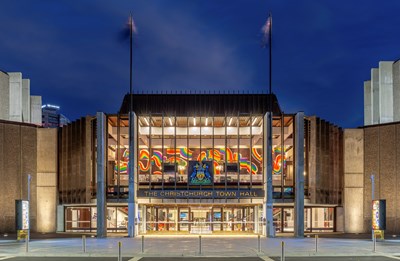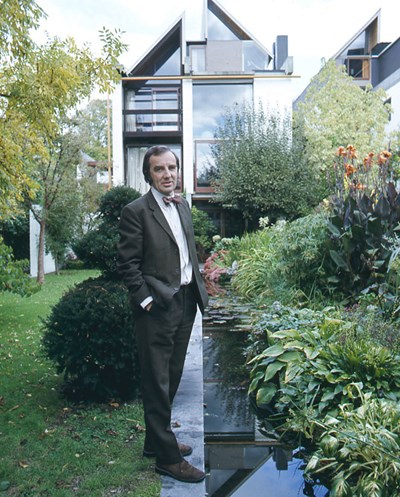This year's Gold Medal celebrates and recognises the outstanding contribution of Sir Miles Warren to the architectural profession as the founding partner of Warren and Mahoney from the firm's inception in 1958 until his retirement in 1995.
A commission for the Christchurch Dental School in 1958 initiated the partnership with Maurice Mahoney. This won them their first NZIA Gold Award and gave them national recognition. Earlier, Miles Warren had gained postgraduate experience working in London and was influenced by the prevailing "New Brutalist" movement, which was concerned with the functionalist principles of Modernism and the expressive qualities of building materials and systems.
In 1955, influenced by these principles, Miles designed a group of flats in Dorset Street, which became a forerunner for what would become known as "the Christchurch Style". Exposed concrete block walls with concrete beams were innovative for both their structural and aesthetic qualities. These materials, with refined details, became the basis for many single and multi-unit houses which, with controlled planning and skilful massing, generated a distinctive, regional domestic architecture.
The sixties saw the new architectural practice develop a consistent and recognisable design approach. There were two particular buildings that are still influential: St John's Crematorium and the architect's own offices and townhouse at 65 Cambridge Terrace. Both extended the vocabulary of white blockwork and expressive concrete frames, but allowed for more sophisticated massing and spatial variety. In each building sculptural roof forms are revealed internally with timber trusses supported on the concrete block walls. These roof forms on block and concrete frames became definitive of the practice and influenced many other architects. The commission for Christchurch College, in 1964 with its brief for a variety of buildings on an open site provided the opportunity for more complex planning and forms. The resulting design of open spaces and carefully shaped buildings has created an enduring environment.
In 1966 Warren and Mahoney won the competition for the Christchurch Town Hall with a design which comprehensively resolved all the complex issues of site organisation, building mass, planning and performance spaces within an expressive architecture. Its completion gave them national exposure and was a landmark for the practice. Commissions over the next decade included many significant projects such as the New Zealand Chancery in Washington, the Wellington Town Hall and civic offices in Rotorua.
The full variety and quantity of architectural design which Miles has been responsible for in his forty-plus years of architectural practice is beyond the scope of this citation but other notable buildings include: the Student Union at Canterbury University, the Christchurch City Library, St Patrick's Church Napier, Union House and the Television New Zealand building in Auckland.
The quality of architecture exhibited in all this work is outstanding. It reveals an architect who is able to understand and create all the separate qualities that make architecture and has provided New Zealand with a body of work that will remain an inspiration. Sir Miles has been dedicated in his pursuit for excellence in design and professional practice and his energy and enthusiasm for architecture has extended into many other associated activities. Although now retired from Warren and Mahoney, Miles is still in practice and is also kept busy maintaining his well-known garden at "Ohinetahi". The New Zealand Institute of Architects honours Sir Miles Warren's achievements and his outstanding contribution to New Zealand architecture.








